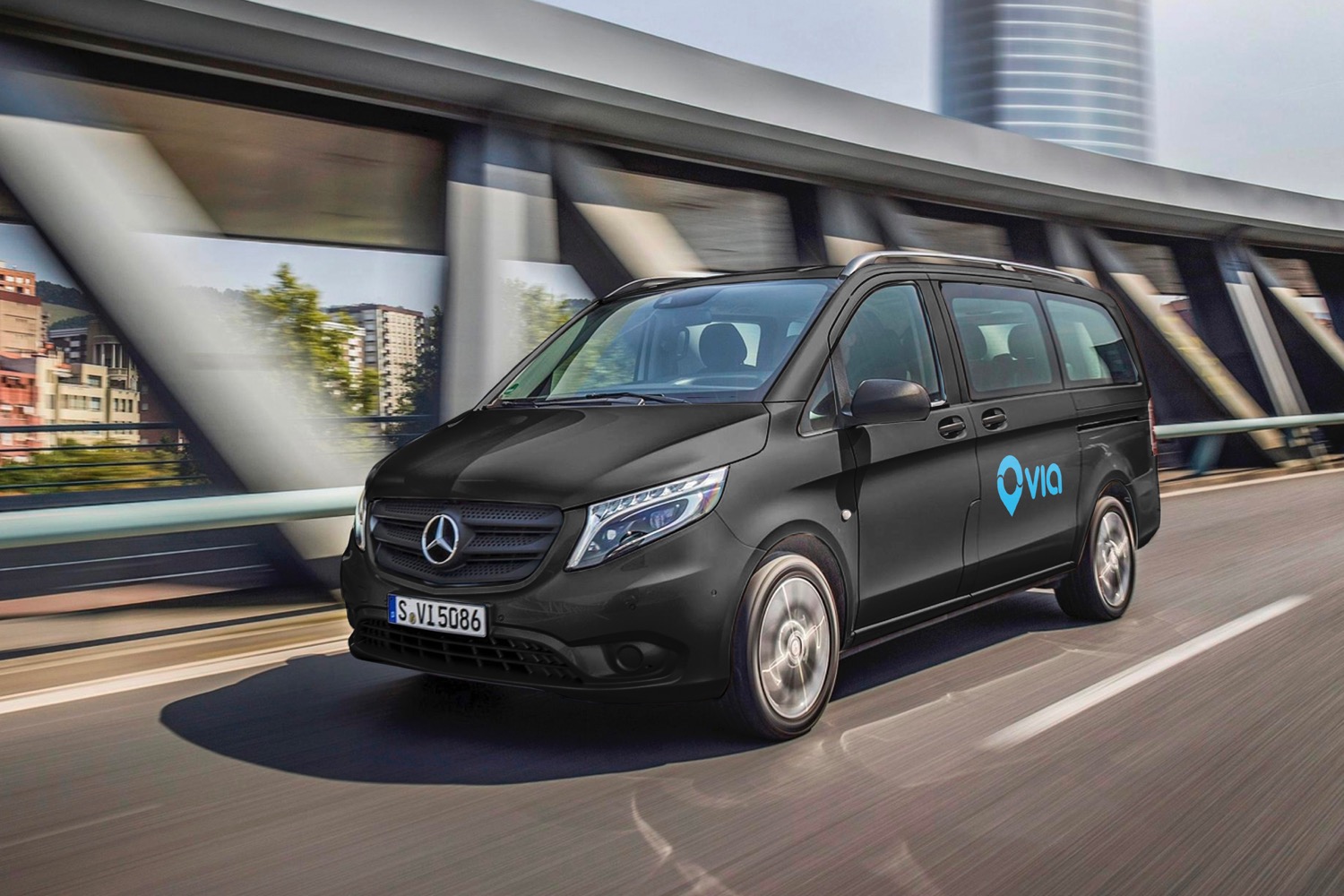
Would you rather hail a ridesharing car, or hop on a bus? One of the many criticisms of ridesharing is that it competes with public transit, but Apple’s hometown wants the two forms of transportation to coexist. Cupertino, California, has tapped Via to operate so-called “on-demand public transit,” using the company’s vans to connect residents with CalTrain commuter rail.
Beginning October 29, commuters will be able to use the Via app (or a phone reservation system) to hail a shuttle van anywhere within Cupertino’s city limits, as well as a zone around the Sunnyvale CalTrain station. Multiple riders will share each vehicle, coordinated by Via’s algorithms. Riders will be directed to “virtual bus stops” within walking distance of their locations.
Having ridesharing customers actually share a vehicle, and minimizing detours through the “virtual bus stops,” Via believes it can keep the service efficient while still offering greater convenience than traditional buses. Riders will be able to hail a shuttle van whenever they want, without being locked into a bus schedule, Via noted.
Via will charge $5 per ride, and will offer multiride passes at $17 a week or $60 a month. Service will operate Monday through Friday from 6 a.m. to 8 p.m., and on Saturday from 9 a.m. to 5 p.m. The fleet will consist of six Mercedes-Benz Metris vans (yes, Mercedes makes vans, and it has a deal to provide them for all of Via’s shuttle services), including one wheelchair-accessible van. Via said it plans to expand to 10 vans “over time.” Avis Budget Group will maintain the vans.
Recent studies have shown that services like Uber and Lyft can erode public transit use, but city officials are increasingly looking to ridesharing operators to help supplement mass transportation. Several cities have tried subsidizing Uber and Lyft rides for residents, with mixed results. Via claims its alternative model, which, it’s worth noting, encourages more riders to share vehicles, can turn public transit into a more flexible, on-demand service. The company noted that other California cities, including Los Angeles, already use its technology. Via claims to have started operations, or plans to start, in 80 locations in over 20 countries, with 60 million rides to date.


